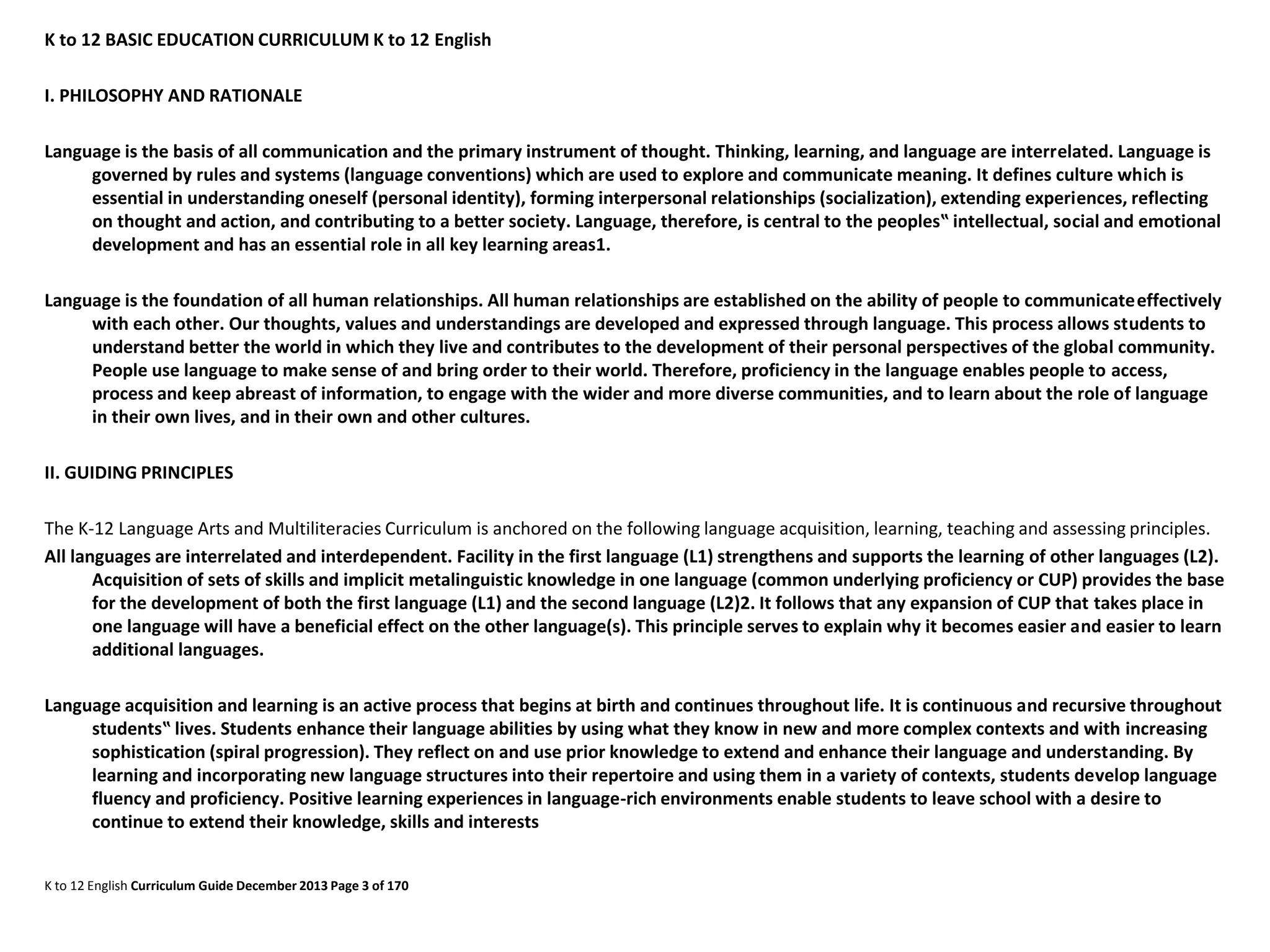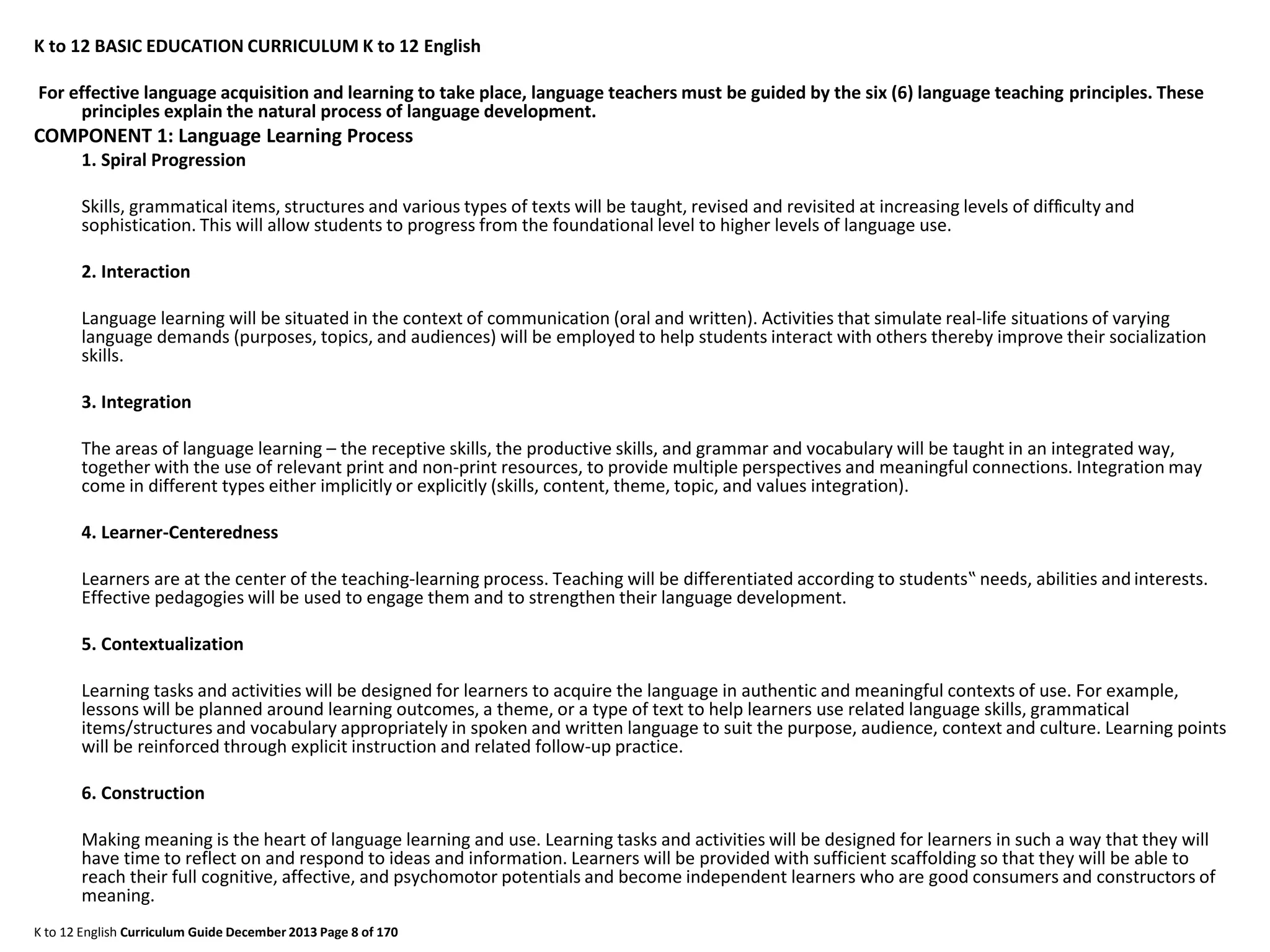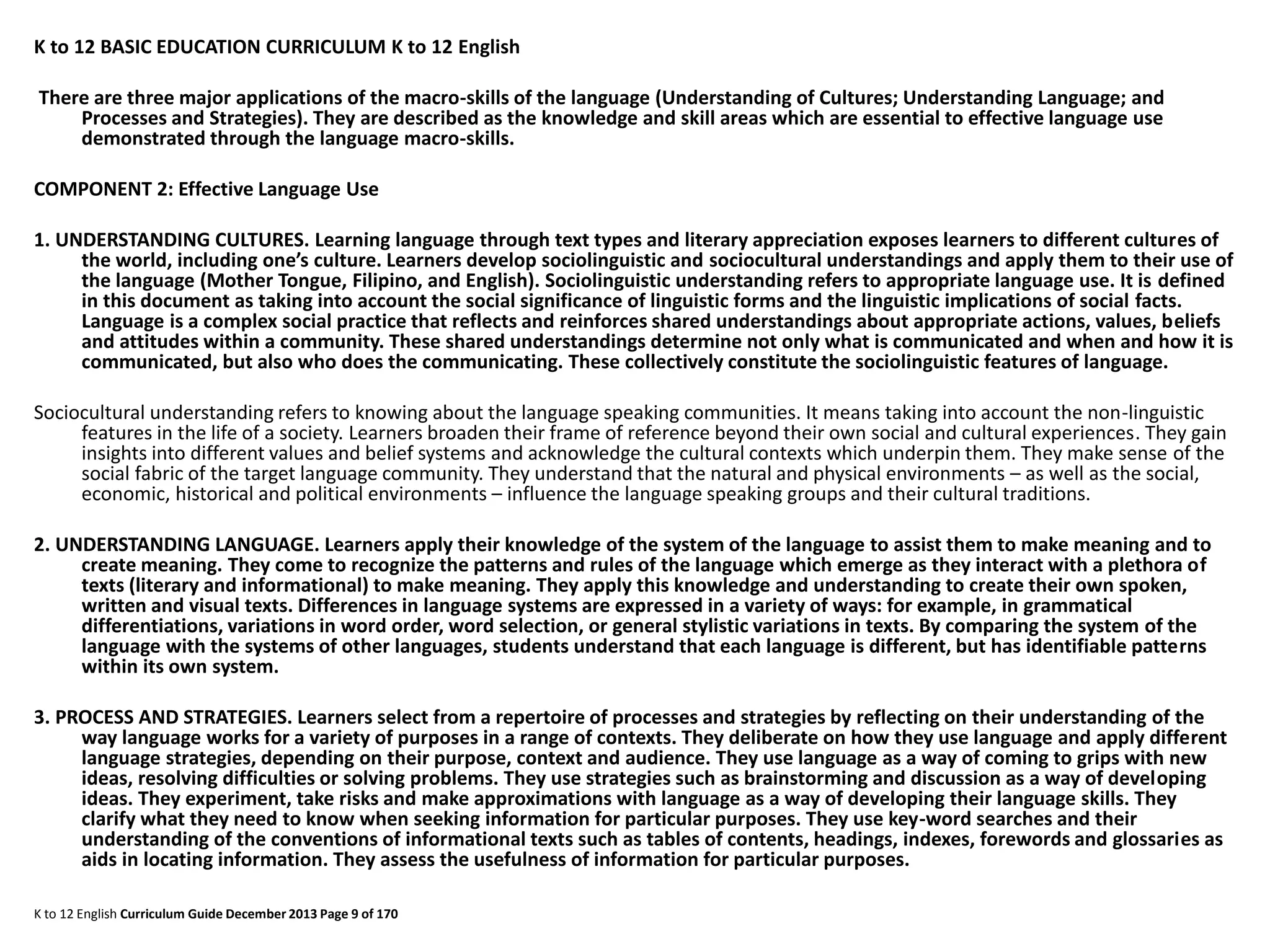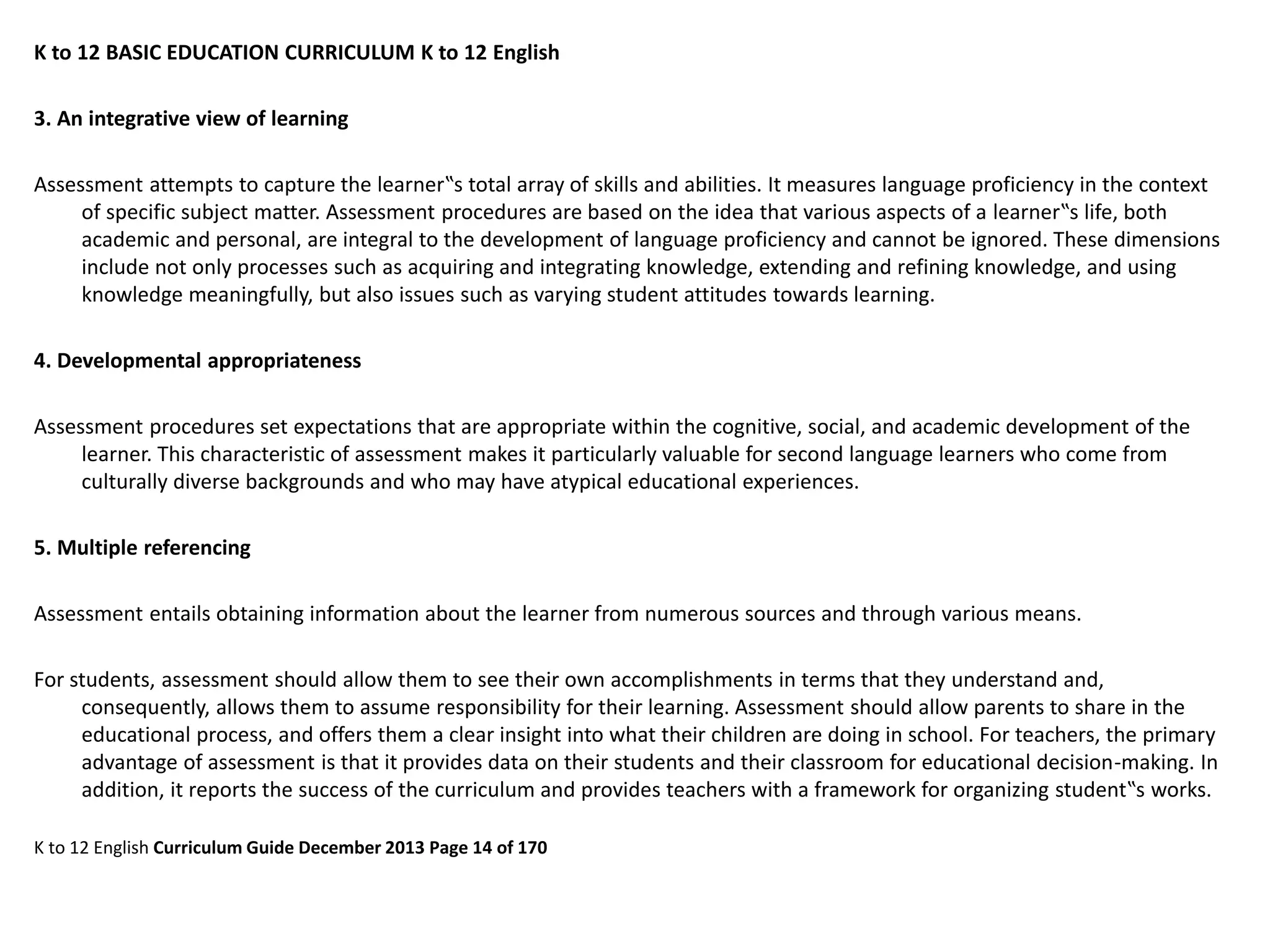The document discusses the K-12 English curriculum in the Philippines. It covers the philosophy, principles, and outcomes of the curriculum. The philosophy states that language is central to intellectual, social, and emotional development. The principles discuss topics like language acquisition, the importance of meaning and engagement with texts, and developing functional and critical literacy. The outcomes section describes developing communicative competence through grammatical, sociolinguistic, and discourse competencies. It also discusses the needs of Generation Z learners, who are digital natives highly influenced by technology.















